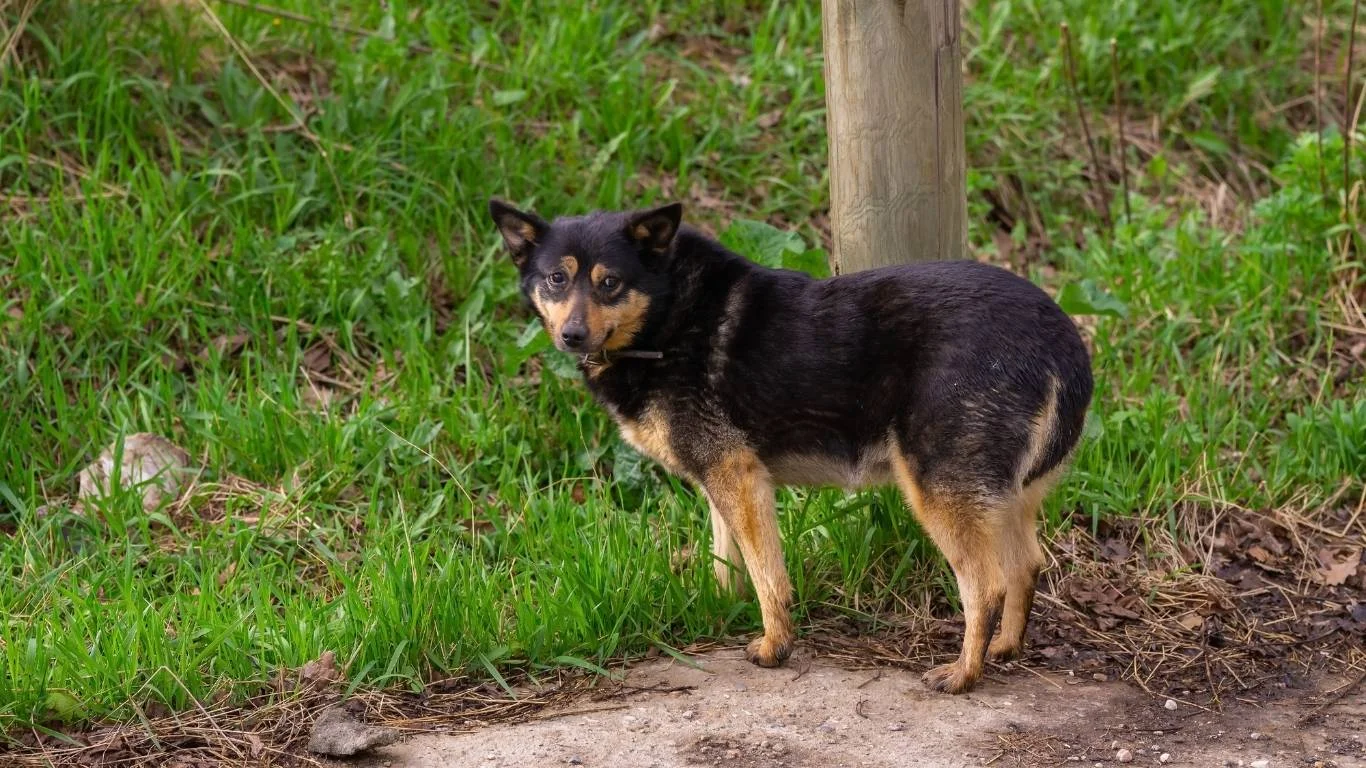Boost Your Dog’s Appetite Naturally: Proven Tips for Picky Eaters
Have you ever found yourself worrying about your dog’s sudden lack of interest in food? As a pet nutritionist, I’ve seen this countless times in veterinary clinics—dog parents coming in stressed, wondering why their pup is turning their nose up at meals. If you’re asking, “How to improve a dog’s appetite naturally?”—you’re not alone! The good news? There are plenty of natural ways to help bring back their enthusiasm for food, and I’ll walk you through them, just like I’ve done for many pet owners over the years.
Understanding Why Your Dog Won’t Eat

Before jumping into solutions, it’s important to understand why your dog is refusing food. I’ve encountered cases where pet parents were frantic, only to realize their pup was just being picky rather than having a medical issue. But other times, the lack of appetite signaled something more serious.
Common Reasons for Appetite Loss
- Stress or Anxiety: Dogs are sensitive creatures. A change in routine, a new home, or even loud noises can make them lose interest in eating.
- Medical Issues: Dental pain, digestive problems, or underlying conditions like kidney disease can cause appetite loss.
- Picky Eating Habits: Some dogs just develop a preference for certain foods—especially if they’ve been spoiled with too many treats!
- Food Quality or Freshness: Dogs have a keen sense of smell. If their kibble has gone stale or isn’t appealing, they might refuse it.
Once we identify the cause, we can move toward natural solutions to encourage eating.
Make Mealtime Exciting Again

One of my go-to methods in the clinic when a dog isn’t eating? Making mealtime an event! Dogs, just like us, enjoy variety and stimulation.
1. Warm Up the Food
Ever noticed how warm meals smell more appetizing? The same applies to dogs! Heating up their wet food or adding warm water to dry kibble can enhance the aroma, making it irresistible.
2. Add Bone Broth or Goat’s Milk
This is a trick I’ve shared with many dog parents—low-sodium bone broth or raw goat’s milk can entice even the pickiest eaters. It’s packed with nutrients and adds a flavorful boost.
3. Hand-Feeding and Positive Reinforcement
Sometimes, a little extra love goes a long way. I’ve had success getting dogs to eat by simply offering food from my hand. This builds trust and helps them associate mealtime with comfort.
4. Rotate Protein Sources
Imagine eating the same meal every single day—boring, right? Dogs feel the same way. Try alternating between chicken, beef, lamb, or fish-based meals to keep things interesting.
Enhancing Nutritional Value with Natural Toppers

Sometimes, the trick to getting a dog to eat lies in adding small but impactful changes to their food.
1. Fresh Fruits and Vegetables
- Blueberries: Antioxidant-rich and great for a snack.
- Carrots: Crunchy and full of vitamins.
- Pumpkin: A great digestive aid and appetite booster.
2. Omega-3 Rich Additions
Adding a little salmon oil or sardines to your dog’s food not only improves appetite but also boosts coat health.
3. Eggs – A Superfood for Dogs
Scrambled or boiled, eggs are an easy, protein-rich option that can be mixed into their meal for extra appeal.
These small changes can make a big difference in encouraging your dog to eat, naturally and healthily!
Creating a Stress-Free Eating Environment

One thing I always remind pet parents of—dogs can be incredibly sensitive to their surroundings. If your pup isn’t eating, it might not be about the food itself but the environment they’re eating in. I’ve worked with dogs who would barely nibble at their meals simply because they felt uneasy or rushed.
1. Reduce Distractions and Noise
Have you ever tried to enjoy a meal in a noisy, chaotic setting? It’s not exactly relaxing. Dogs feel the same way. If your home is filled with loud TV sounds, kids running around, or other pets hovering nearby, your dog might be too stressed to eat. Try serving meals in a quiet, calm space where they can focus on their food.
2. Stick to a Consistent Feeding Schedule
Dogs thrive on routine. If their mealtimes are unpredictable, they may not feel hungry when food is offered. I always suggest feeding them at the same times each day—this helps regulate their metabolism and build an appetite.
3. Avoid Negative Associations
If your dog had a bad experience while eating—like being startled by a loud noise or feeling unwell after a meal—they may associate food with discomfort. In cases like these, try a fresh start by changing their feeding spot or switching to a new bowl.
Using Exercise to Stimulate Appetite

Just like in humans, physical activity can help spark a dog’s appetite. Have you ever noticed your pup eating more after a long walk or a fun play session? That’s because exercise naturally increases hunger.
1. Pre-Meal Walks or Playtime
One of my go-to tricks when a dog refuses to eat? A good walk before meals. Not only does it stimulate their appetite, but it also helps with digestion. If walking isn’t an option, a quick game of fetch or tug-of-war can have a similar effect.
2. Mental Stimulation Helps Too
Sometimes, a dog may not be physically tired but mentally bored. Interactive toys, puzzle feeders, or a short training session before mealtime can boost their mood and appetite.
3. Avoid Overfeeding Treats
I’ve seen it too many times—owners unknowingly sabotaging their dog’s appetite by giving too many treats throughout the day. If a dog fills up on snacks, they won’t feel hungry at mealtime. Keep treats minimal and make sure they earn them!
Natural Supplements to Boost Appetite

Sometimes, even with the best efforts, a dog might need an extra push. That’s where natural supplements come in. I’ve recommended these to many pet parents in my clinic, and they’ve seen great results.
1. Probiotics for Gut Health
A healthy gut is key to a good appetite. Probiotics help balance the gut flora, improving digestion and making food more appealing. I personally love using plain Greek yogurt or a high-quality probiotic supplement.
2. Appetite-Boosting Herbs
- Ginger: Helps with nausea and stimulates appetite.
- Dandelion Root: Supports digestion and liver health.
- Chamomile: Soothes the stomach and reduces anxiety-related appetite loss.
3. CBD Oil for Anxious Eaters
For dogs who are too anxious to eat, CBD oil can work wonders. It helps relax them, making mealtime more enjoyable. Always consult a vet before starting any new supplement!
With the right approach, your dog’s appetite can improve naturally, making mealtime a joy instead of a struggle.
Homemade Meals & Fresh Food Options

Sometimes, the key to getting a picky eater back on track is fresh, homemade food. I’ve worked with dog parents who tried every kibble brand under the sun, only to find that their pup preferred fresh, lightly cooked meals.
1. Balanced Homemade Recipes
If you’re considering making meals at home, ensure they’re nutritionally balanced. A simple meal I’ve recommended includes:
- Lean protein (chicken, turkey, or beef)
- Healthy carbohydrates (sweet potatoes, brown rice, or quinoa)
- Vegetables (carrots, green beans, or spinach)
- A drizzle of salmon oil for omega-3 benefits
Homemade meals can be a game-changer, but always consult a vet or pet nutritionist to ensure your dog gets all essential nutrients.
2. Raw Feeding for Natural Instincts
Some dogs thrive on a raw diet, which mimics what their ancestors would eat in the wild. I’ve seen dogs with low appetites regain excitement for meals once they switched to raw. If you’re new to raw feeding, consider starting with reputable raw food brands to ensure proper balance.
3. Freeze-Dried & Dehydrated Options
If fully homemade or raw meals aren’t feasible, freeze-dried and dehydrated foods offer a great alternative. These are minimally processed yet packed with nutrients, and many dogs love the texture when rehydrated with warm water.
When to Seek Veterinary Help

While natural methods can significantly improve appetite, there are times when professional help is necessary. If your dog’s appetite loss persists despite trying these solutions, it could indicate an underlying health issue.
1. Signs Your Dog Needs a Vet Visit
- Loss of appetite lasting more than 48 hours
- Weight loss or sudden lethargy
- Vomiting, diarrhea, or excessive drooling
- Changes in behavior, such as hiding or avoiding food
2. Medical Conditions That Affect Appetite
From my experience in veterinary clinics, I’ve seen conditions like kidney disease, dental pain, and digestive disorders cause appetite issues. If your dog is refusing food and showing other symptoms, a thorough check-up is essential.
3. Prescription Appetite Stimulants
In cases where a dog refuses to eat due to illness, vets may prescribe appetite stimulants like mirtazapine or cyproheptadine. These medications can help kickstart eating, but should always be used under veterinary supervision.
Final Thoughts & Encouragement
Improving a dog’s appetite naturally takes patience, trial, and understanding. From creating a stress-free environment to incorporating nutritious toppers and exploring fresh food options, every small change makes a difference.
As a pet nutritionist, I’ve seen countless dogs go from food-refusing to food-loving with just a few adjustments. Trust the process, stay observant, and remember—your pup’s health and happiness are worth the effort.
References
- American Kennel Club – Dog Nutrition & Feeding Guide
- VCA Animal Hospitals – Appetite Loss in Dogs
- Darwin’s Pet – Raw Feeding Guide
Disclaimer
This article is for informational purposes only and should not replace professional veterinary advice. If your dog has ongoing appetite issues, consult a veterinarian for a proper diagnosis and treatment plan.






